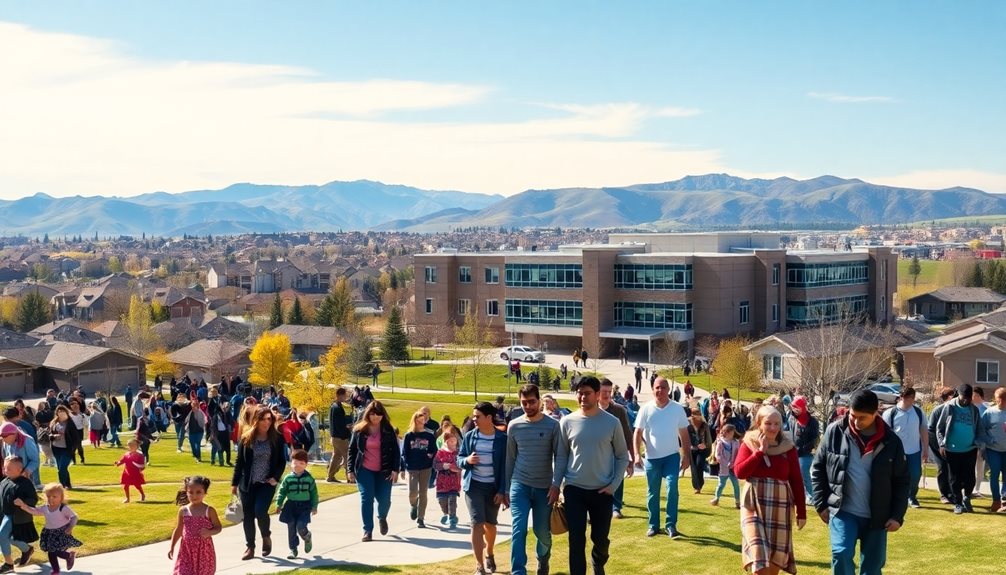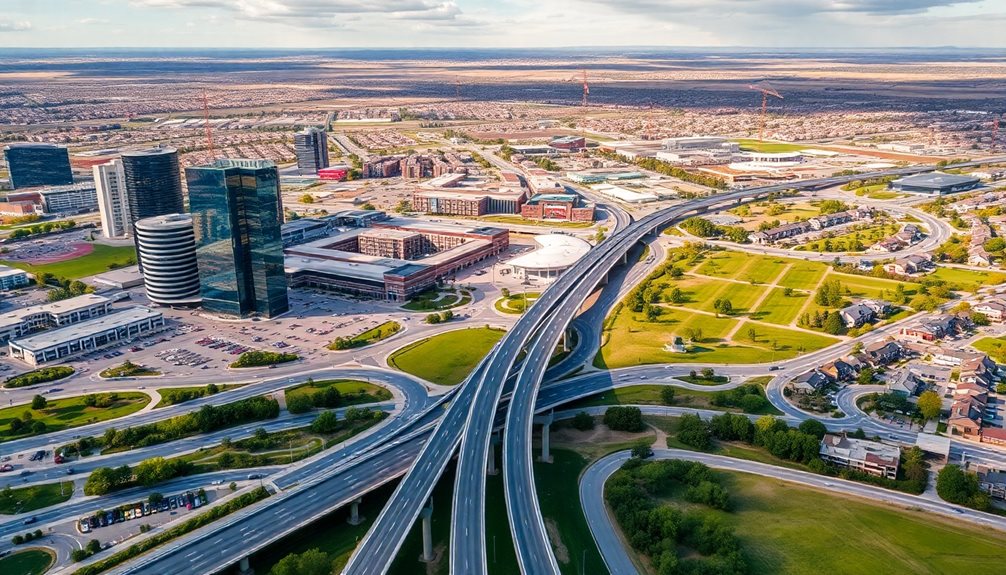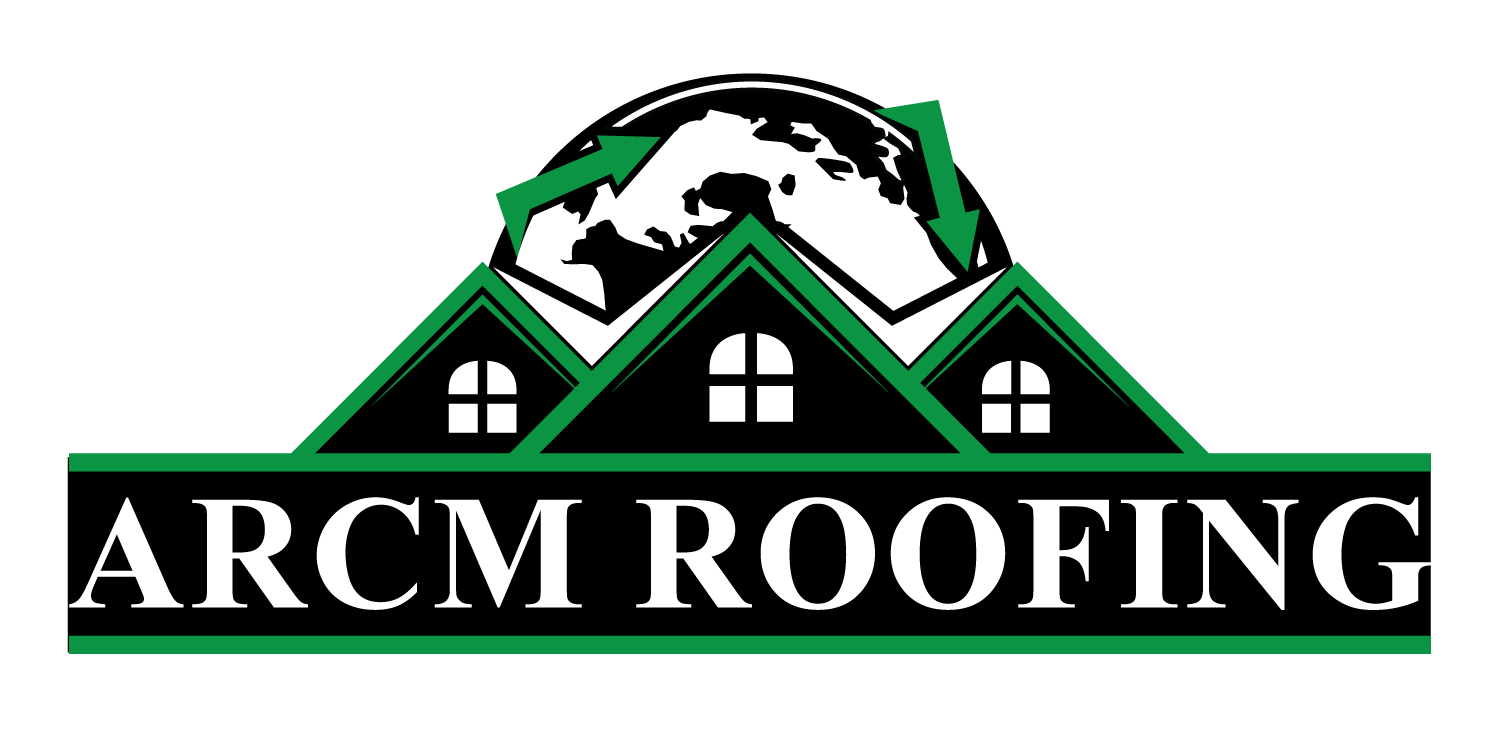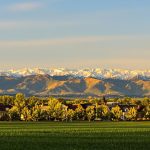Thornton, Colorado, boasts a diverse population of approximately 141,799 residents, with a median age of 33.7 years. The city is demographically diverse, featuring White, Hispanic, and Asian communities, alongside a significant proportion of U.S.-born citizens. Strategically located near Denver, Thornton leverages major highways and airport connectivity to fuel economic growth, including commercial development and business support initiatives. Its vibrant cultural scene and geographical advantages present additional opportunities for exploration.
Expert Highlights
- Thornton, CO has about 141,799 residents.
- Median age is 33.7 years with a male-to-female ratio of 50.21% to 49.79%.
- Economic growth is supported by a strategic location near Denver.
- The city offers a diverse, multicultural environment with significant Hispanic and Asian populations.
- Major highways enhance the city's connectivity and accessibility.
Population and Demographics

Thornton, Colorado, houses a diverse population with a unique demographic profile. The city has a population of approximately 141,799 residents, with a median age of 33.7 years.
Demographically, males comprise 50.21% of the population, and females make up 49.79%. Thornton's ethnic composition includes White (50%), Hispanic (37%), and Asian (5.7%) communities.
The city also has a significant U.S.-born citizen population, with around 84.36%. Non-citizens account for 8.9% of the residents, reflecting its multicultural and inclusive environment. Visitors can discover Thornton's best attractions through the city's official online resources.
Economic Growth and Development

The economic landscape of cities like Thornton, Colorado, is deeply influenced by their demographic makeup, as diverse populations often foster a dynamic and inclusive business environment.
Thornton's economic development is notable, with a regional workforce population of 3.4 million and significant investments in commercial development.
The Office of Economic Development provides extensive support for businesses, including real estate searches and incentive negotiations, helping to attract major companies and promote local growth.
Strategic locations and infrastructure also contribute to its economic growth potential.
Like nearby vibrant city Northglenn, Thornton continues to expand its economic opportunities through strategic planning and development initiatives.
Cultural Activities and Events

Cultural activities in the city of Thornton, Colorado, are vibrant and varied, reflecting the community's diverse interests.
Thornton boasts a rich cultural scene, providing numerous opportunities for engagement.
- Arts & Culture Center: A hub for art events and exhibitions.
- Community Art Programs: Year-round art classes and cultural events.
- Local History Initiatives: Preservation of city artifacts and historical sites.
- Festivals and Concerts: Annual celebrations like Harvest Fest and musical performances.
Geographical Advantages and Infrastructure**
How advantageous is a city's geographical location to its infrastructure and overall development?
Thornton, Colorado, benefits remarkably from its prime location just north of Denver.
Situated near major highways like I-25 and I-70, the city offers excellent connectivity, facilitating both commercial development and residential quality of life.
With over 1,400 acres of developable commercial land along the I-25 corridor and proximity to Denver International Airport, Thornton is well-equipped for growth, supported by numerous infrastructure investments and strategic transit connections.
This advantageous positioning drives its economic and demographic evolution.
Expert Final Thoughts
Thornton, Colorado, is a rapidly growing city with a diverse demographic profile, boasting a population of approximately 145,000 residents with a median household income of around $100,985. The city's strategic location and infrastructure facilitate economic development, supporting diverse industries. Cultural events and community activities thrive amidst its geographical advantages, including proximity to major urban centers, while maintaining a balance between suburban tranquility and urban accessibility.




